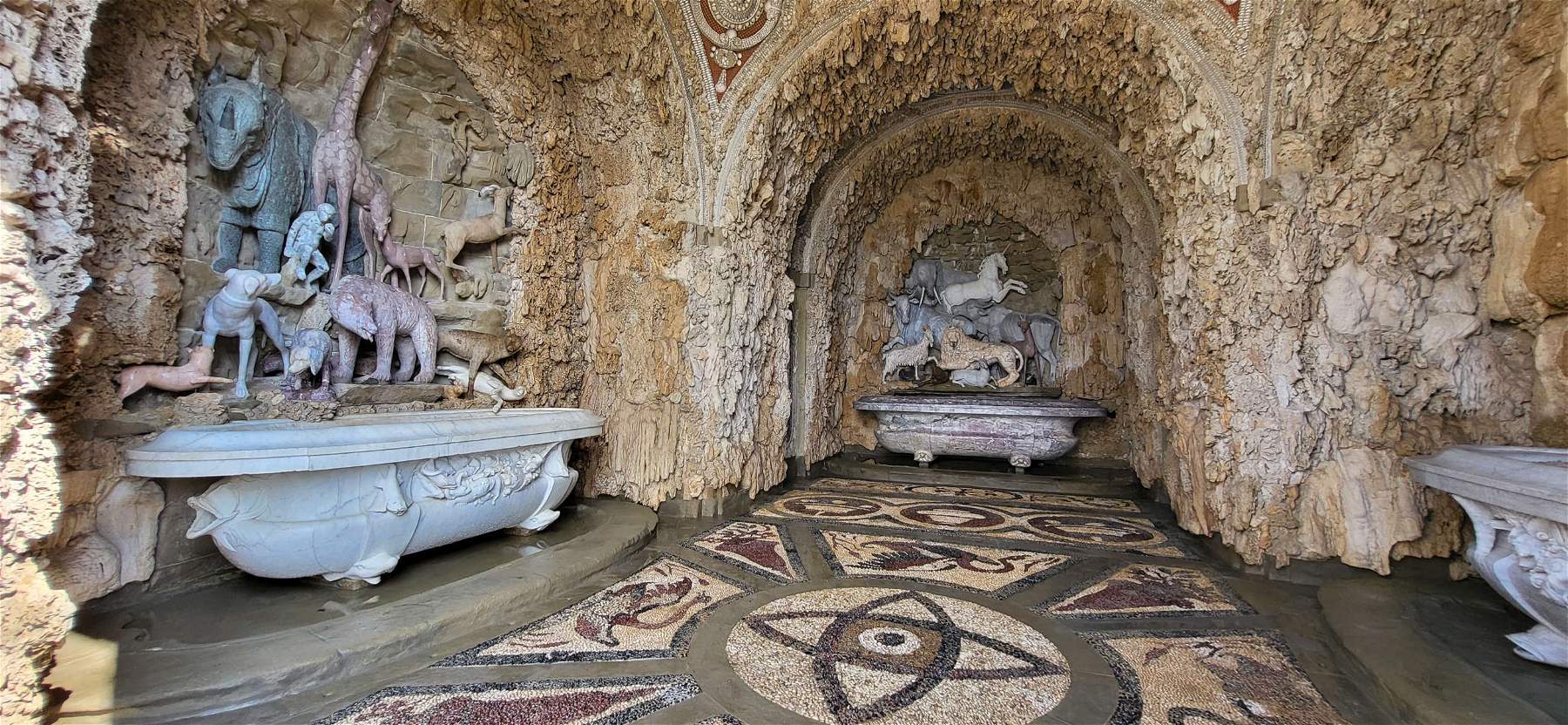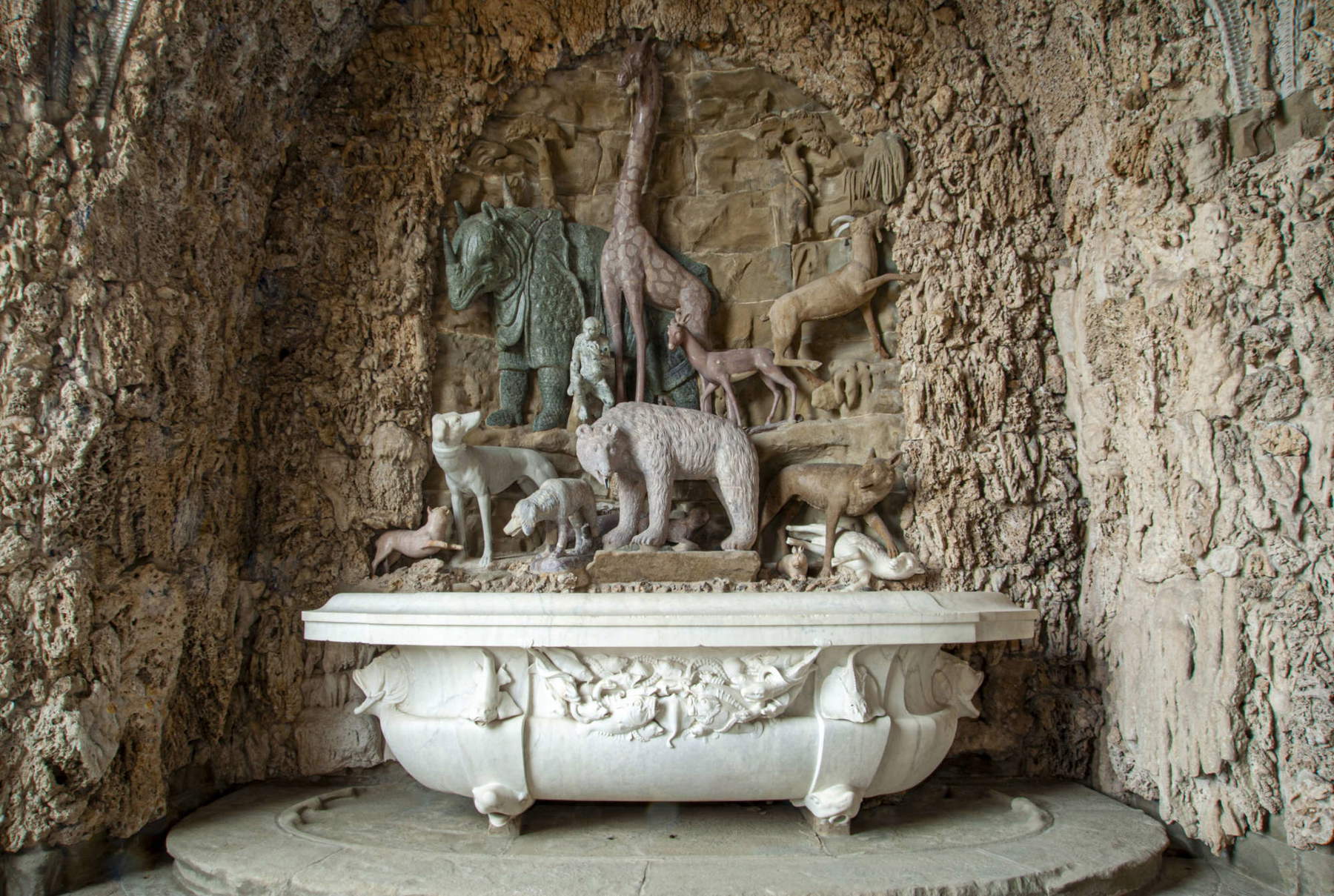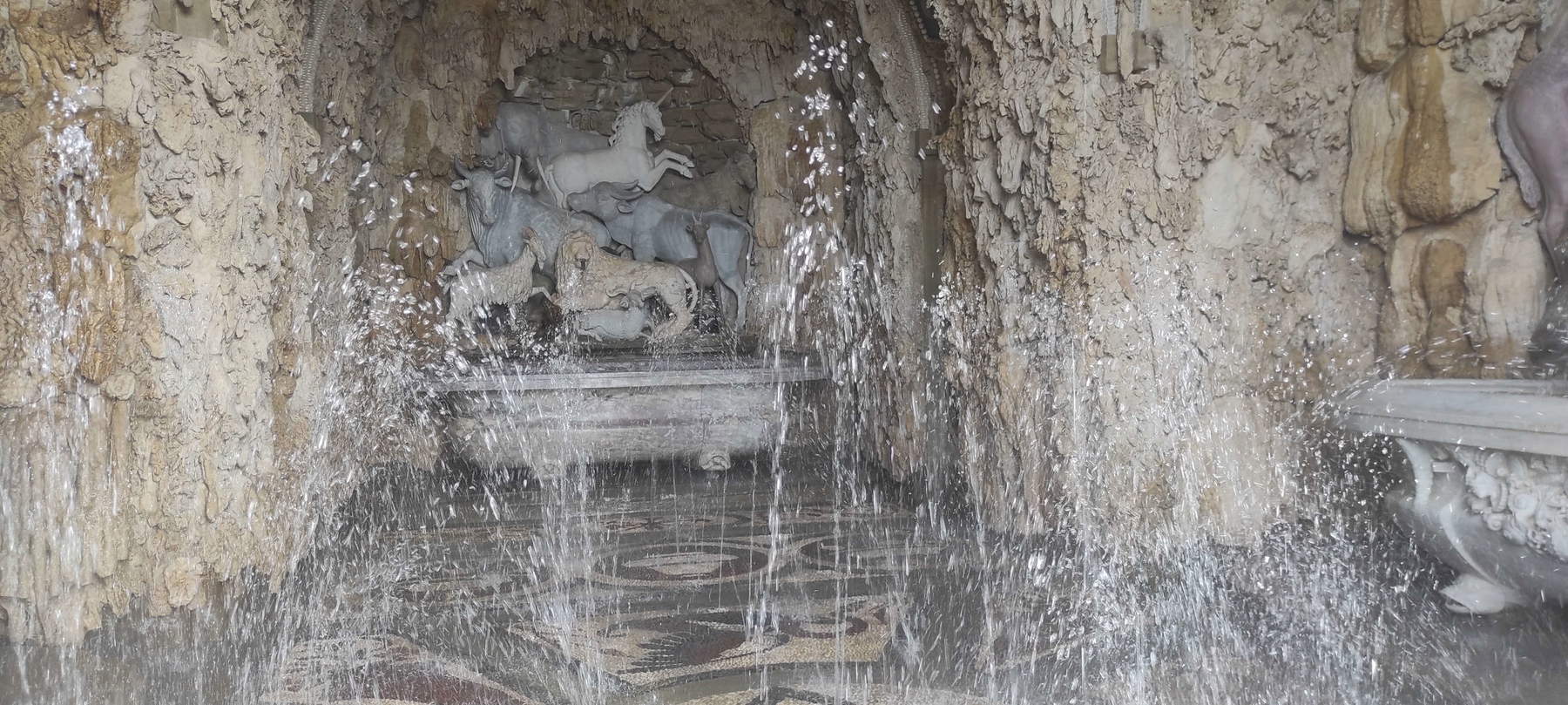In Florence , the restoration of the Grotta degli animali (Cave of the Animals ) in the Garden of the Medici Villa of Castello is coming to an end.The work, the first phase of which began in 2012, has seen its conclusion just as the 450th anniversary of the death of two important historical figures, Cosimo I de’ Medici (Florence, 1519 - 1574), grand duke of Tuscany, and Giorgio Vasari (Arezzo, 1511 - Florence, 1574), celebrated painter, architect, draughtsman and man of letters. This grotto, commissioned by Duke Cosimo I from Niccolò Pericoli known as Il Tribolo (Florence, 1497 - 1550) starting in 1539 and then continued by Vasari after the architect’s death, was referred to as a masterpiece in Vasari’s Lives.
The complex restoration work, which lasted several years, involved the collaboration and commitment of numerous institutional partners, as well as the support of patrons through the Art Bonus program. During the Easter holiday openings, visitors and citizens will have the opportunity to admire the original surfaces of the marbles of the basins, individual animals and multicolored stones, now consolidated and cleared of the deposits that obscured their chromatic brilliance. The relevant institutes of the Ministry of Culture over time, including the Special Superintendence for the Florentine Museum Pole and the Regional Museums Directorate of Tuscany, launched the first phase of the project between 2012 and 2017, with initial ministerial funding. Subsequently, from 2018 to 2021, thanks to a POR-FESR grant provided by the Region of Tuscany, as the lead agency of the Unesco site “Medici Villas and Gardens,” it was possible to complete the last tranche of the plumbing, under the direction of the ABAP Superintendency for the metropolitan city of Florence.
The important Art Bonus grant provided by Publiacqua spa in 2022/2023 then allowed the restoration of the delicate polymateric surfaces of the Grotto and the upgrading of the balustrade and all the plastered surfaces of the wall bordering the Citrus Plan, thus contributing to the preservation and enhancement of this precious historical and artistic heritage.
The water features in the Grotto of the Animals in the Garden of the Medici Villa of Castello will come into operation from the end of April on weekends, thanks to a timed ignition system that will be activated four times a day. This hydraulic system is designed to ensure water recovery, reducing water and energy waste. In the future, it may also be connected to the other fountains in the garden, expanding the visitor experience. The public will have the opportunity to admire the grotto from the outside as early as tomorrow and during holiday openings on Easter and Monday, April 1. From April 11 until June 30, it will also be possible to visit it internally by participating in special free tours, accompanied by museum staff. Also starting March 26, the entire park area reopens to the public. Here, two centuries-old oak trees have adapted their roots over the centuries to the conformation of the cave below. Guests will once again be able to admire the majestic Apennine Fountain.
The Grotto, also known as ’of the Flood,’ represents a true water theater, a symbol of power expressed through wonder. It is placed at the crowning of the Garden and marks the conclusion of an extraordinary perspective axis that starts from Bartolomeo Ammannati’s fountain of Hercules and Antaeus, now placed on the first terrace at the center of the geometric design of the flowerbeds.
Inside, three monumental basins with three scenic and theatrical compositions of dozens of mammals, fish, crustaceans and mollusks create the effect of a menagerie that seems to come alive when stones of different colors, inspired by the original animal fleece, get wet from the effect of the more than one hundred gushes that come out of the floor, the vaults and the mouths of some animals, as Michel de Montaigne recalled after his 1580-81 trip in the Journal du voyage en Italie, “[....] there is a beautiful grotto where, depicted in the natural state, one sees animals of every species splashing the water of said fountains some from their beaks, some from their wings, some from their claws or ears or noses.” Adding to the wonder are the iridescent effects given by the shell mosaics on the vault. The sculptural decorations recall the three elements of earth, air and water. In the center of the front basin stands the unicorn, the unique fantastic animal that according to one legend has the power to heal the waters thanks to its magic horn, a symbol of the beneficial action of Cosimo’s policy. In keeping with the neo-Platonic spirit of the time, when it was believed that man could rival and control nature, the water features were not only meant to amaze and amuse onlookers, but represented a testament to human ingenuity and ability, as Giorgio Vasari writes again in the proem to Lives: “[...] water rains by drippings from these Tartars, and by dripping makes sweetness in hearing and beauty in seeing.” In the center of the cave is in fact an acoustic mirror from where sounds spread with extraordinary clarity throughout the space, blending harmoniously with the sound of the water. A small stratagem of the hydraulic system probably also allowed Duke Cosimo to observe amusedly, from a single point that always remains dry, his guests unexpectedly invested by the jets of water.
 The
The The
The The
The The
The“Re-opening the Grotto of the Animals to the public and reactivating the water features,” says Stefano Casciu, Regional Museums Director of Tuscany, “for centuries the major attraction of one of the most important Renaissance masterpieces and the Castle Garden, called by Vasari ìthe richest, the most magnificent and the most ornate garden in Europeì, an essential stop on the Grand Tour, is an unexpected achievement that is the result of the synergy and commitment of the Ministry of Culture and the Region of Tuscany, supported by Publiacqua spa. ”The collaboration with restorers and scientific partners has been fundamental,“ adds Marco Mozzo, director of the Villa di Castello Garden, ”and will continue in the future in order not to dissipate the efforts achieved by ensuring the control and maintenance of the hydraulic system and decorated surfaces.
“The completion of the restoration of the Grotto of the Animals, with the restoration of the water features, will revive for visitors a bit of the enchantment that was surely the aim of those who designed this wonderful garden, commissioned by Cosimo I dei Medici,” stresses Eugenio Giani, president of the Region of Tuscany. “An achievement that is the result of teamwork between the Ministry and the Region and with the collaboration of numerous entities and expertise. It is a tribute to the father of Tuscany on the 450th anniversary of his death, and one that the Region, which as has been recalled is the leader of the Unesco site ’Medici Villas and Gardens,’ has strongly supported, contributing to the conclusion of the project with funding from the ERDF Regional Operational Plan. Enhancing the Medici villas and gardens means enhancing the cultural history of Tuscany and our artistic tradition, because these villas have been places of cultural, spiritual and scientific life for centuries. Today’s is therefore a step in an organic path that aims to redevelop and enhance the entire heritage, building a path of wonders, a Medici way that will take us on a journey through Tuscany, allowing us to visit beautiful places, where architecture and nature meet and overlap, and that are part of the essence of this region.”
“An important intervention that gives back to the citizens the spectacle of the Cave of the Animals of the Medici Villa of Castello,” said Alessia Bettini, deputy mayor and councillor for Culture and Tourism of the Municipality of Florence, helping to enhance a heritage of beauty, history and culture that we increasingly want to promote and make known. This is a further step in the direction of ever greater synergy, with a view to a tourism that does not focus only on the major attractions and the most beaten areas, going to embrace the entire city and metropolitan territory, so as to also relieve the pressure on our historic center."
“It is a privilege for us to have contributed to this restoration,” says Nicola Perini, President of Publiacqua SpA, “which returns one of its most precious masterpieces to our communities. So I thank the Ministry of Culture and the Regional Museums Directorate of Tuscany for the opportunity to be here today with them, and with the region of Tuscany, to celebrate this important event. Thanks also to all those who made the restoration possible with their professionalism and expertise.”
 |
| Florence, finishes restoration of spectacular Cave of the Animals at Villa Medicea di Castello |
Warning: the translation into English of the original Italian article was created using automatic tools. We undertake to review all articles, but we do not guarantee the total absence of inaccuracies in the translation due to the program. You can find the original by clicking on the ITA button. If you find any mistake,please contact us.